

Delhi, officially the National Capital Territory of Delhi, is a city and union territory of India containing New Delhi, the capital of India. Situated on the banks of the Yamuna River, Delhi has been continuously inhabited since the 6th century BCE. Throughout its history, Delhi has served as the capital of various kingdoms and empires, most notably the Delhi Sultanate and the Mughal Empire. The city is dotted with gardens, forts, and monuments that were built by several emperors. Today, Delhi is a massive metropolitan area and one of the world's fastest-growing cities, offering a fascinating blend of historical grandeur and contemporary urban development, where ancient monuments stand alongside modern skyscrapers, and traditional markets coexist with luxury shopping malls.

Delhi stands as a testament to India's rich historical legacy and its continuous civilization spanning millennia. The region's history dates back to the ancient Indus Valley Civilization, with the legendary city of Indraprastha mentioned in the Mahabharata epic. The name "Delhi" is believed to be derived from Dhillika or Dhilli, and the city has been continuously inhabited since at least the 6th century BCE. Delhi has served as the capital of numerous empires, earning its reputation as the "City of Seven Cities" built by different rulers over centuries.
The city has witnessed the rise and fall of several powerful empires including the Tomara dynasty, the Delhi Sultanate, the Mughal Empire, and the British Raj. Each era left its distinctive architectural and cultural imprint on the city, creating the rich tapestry that defines Delhi today. From the Qutub Minar complex to the Red Fort, from Humayun's Tomb to the Lotus Temple, Delhi's landscape tells the story of India's historical evolution. The city developed a unique cosmopolitan identity characterized by its ability to absorb and synthesize diverse cultural influences while maintaining its essential Indian character.
Delhi has been a center of arts, literature, and culture throughout its history. The city is known for its contributions to Urdu poetry, Hindustani classical music, and Mughal miniature painting. The traditional crafts of Delhi, including zardozi embroidery, meenakari work, and pottery, reflect the city's artistic heritage. The performing arts, particularly qawwali and Kathak dance, continue to thrive in Delhi's cultural spaces.
Delhi played a crucial role in India's struggle for independence, serving as the center of political activity and national movement. After independence in 1947, Delhi became the capital of the Republic of India and has since grown into one of the world's most important metropolitan areas, representing India's aspirations as a modern democratic nation while preserving its ancient heritage.
The cultural legacy of Delhi is rich and multifaceted, with strong traditions in architecture, literature, music, and cuisine. The city is famous for its Mughlai cuisine, its vibrant markets, and its unique blend of traditional and contemporary arts. Traditional crafts and artistic traditions have been preserved through generations and continue to be important aspects of Delhi's cultural economy.
Today, Delhi takes immense pride in this heritage of historical significance and cultural diversity. The city's position as India's capital represents its central role in the nation's political, cultural, and economic life. The values of pluralism, tolerance, and synthesis that have characterized Delhi through the centuries continue to shape its identity in the modern era.
The legacy of Delhi's seven cities and cultural traditions is not just historical; it continues to inspire contemporary Indian identity. The city's role as a melting pot of cultures and a center of political power makes it a microcosm of India itself. The traditional knowledge systems related to urban planning, architecture, and arts offer valuable resources for understanding India's civilizational continuity and urban development in the modern context.
Delhi is known for its remarkable linguistic diversity, reflecting its status as India's capital and a melting pot of cultures from across the country. The city's language landscape showcases its unique position as the center of Hindi and home to numerous languages and dialects, creating a fascinating linguistic tapestry that represents India's cultural richness and unity in diversity.
Hindi is the official language of Delhi and serves as the primary language for administration, education, and daily communication. It is the most widely spoken language in the city and has a rich literary tradition. The form of Hindi spoken in Delhi, known as Khari Boli, forms the basis of modern standard Hindi.
The languages of Delhi reflect its unique identity as India's capital and a cosmopolitan metropolis. While Hindi serves as the primary language of communication, the numerous other languages showcase the city's incredible diversity as a microcosm of India. This linguistic richness truly mirrors Delhi's spirit of unity in diversity and its role as a melting pot of cultures from across the Indian subcontinent.
Delhi is a city where all major religious festivals, cultural celebrations, and national events are celebrated with equal enthusiasm and grandeur. The festivals here reflect the city's incredible diversity and its spirit of communal harmony, creating a vibrant tapestry of celebrations throughout the year that showcase Delhi's unique identity as India's capital where all traditions coexist and thrive together.
Diwali is celebrated with magnificent splendor across Delhi, transforming the entire city into a sparkling wonderland of lights and celebrations. As the capital of India, Delhi's Diwali celebrations set the standard for the entire country. The festival marks the victory of light over darkness and good over evil, and in Delhi, it becomes a grand spectacle that brings together people from all communities and backgrounds.

Diwali in Delhi is not just a religious festival but a grand national celebration that showcases the city's spirit of unity in diversity. It brings together people from all walks of life in a spectacular display of cultural pride and joyous celebration. The festival's magnificent scale and inclusive nature make it the true essence of Delhi's identity as India's capital where traditions are preserved while embracing modernity.
Republic Day is Delhi's most spectacular national festival, celebrating the adoption of India's Constitution on January 26, 1950. As the nation's capital, Delhi hosts the grandest Republic Day celebrations in the country, featuring the magnificent parade on Rajpath that showcases India's military might, cultural diversity, and technological achievements. This national festival reflects Delhi's role as the political heart of India and its significance in the nation's democratic journey.
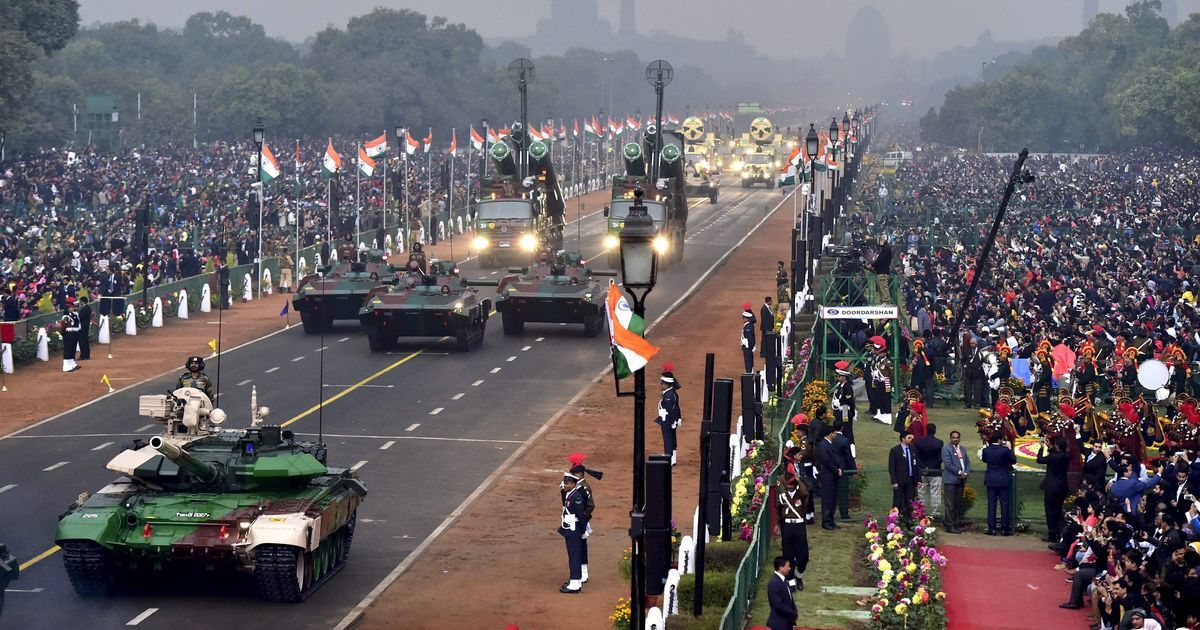
In conclusion, Republic Day in Delhi is not just a national holiday but a magnificent display of India's democratic values, cultural richness, and national pride. It brings together the entire nation in the capital city for a celebration that reinforces India's unity and showcases Delhi's central role in the country's political and cultural life.
Republic Day is more than a national celebration; it is a living tradition that showcases Delhi's central role in India's democratic journey. As the host of the country's most important national event, Delhi represents India's aspirations and achievements to the world. The festival stands as a testament to Delhi's significance as the political capital of the world's largest democracy.
Eid-ul-Fitr is celebrated with great religious fervor and communal harmony across Delhi, particularly in the historic neighborhoods of Old Delhi. The festival marks the end of Ramadan, the Islamic holy month of fasting. Delhi's Eid celebrations are renowned for their grandeur, with the historic Jama Masjid becoming the center of festivities that attract people from all communities.
Eid-ul-Fitr in Delhi is not just a religious observance but a celebration of the city's composite culture and historical legacy. From the magnificent prayers at Jama Masjid to the vibrant markets of Old Delhi, every aspect reflects Delhi's identity as a city where different religious traditions coexist and enrich each other. The festival's spirit of generosity and community bonding makes it an essential part of Delhi's cultural calendar.
The festivals of Delhi showcase its incredible diversity, historical significance, and role as India's capital. From the national celebrations of Republic Day and Independence Day to the religious festivals of Diwali, Eid, and Christmas, every festival reflects the city's spirit of unity in diversity. This harmonious coexistence of different traditions makes Delhi a unique example of India's composite culture, where ancient traditions and modern celebrations blend seamlessly, creating a vibrant cultural mosaic that is distinctly Indian and proudly Delhite.
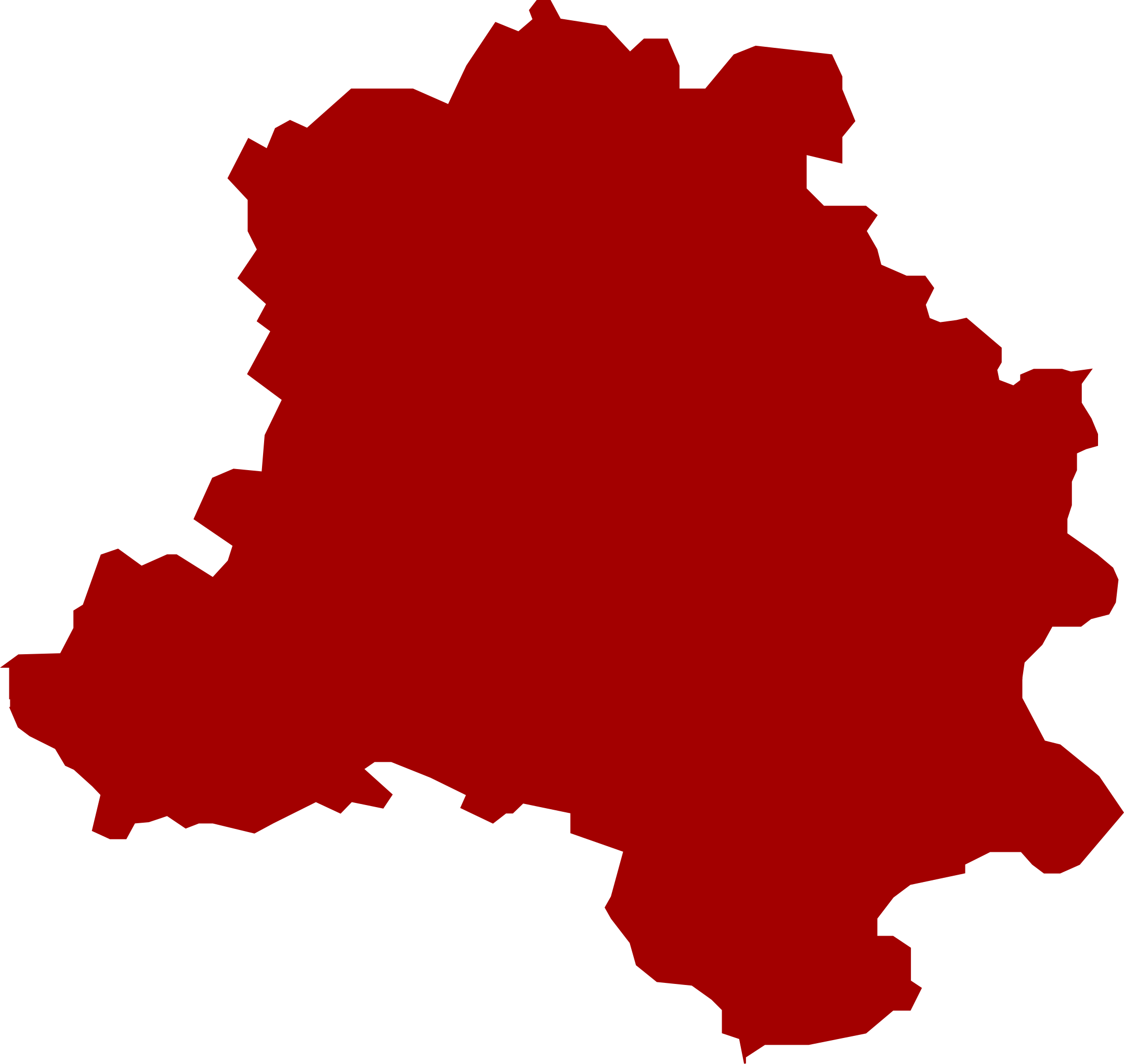
Delhi, India's capital territory, is a sprawling metropolitan area comprising several distinct cities and urban centers that blend ancient heritage with modern development. Each area within Delhi serves as both economic hubs and custodians of diverse cultures, arts, and traditions. Every part of Delhi plays a unique role in shaping the national capital's identity and pride.
New Delhi, the capital city of India, is popularly known as the "Imperial Capital" because of its grand colonial architecture and strategic importance. It serves as the political, administrative, and diplomatic hub of India. New Delhi beautifully balances British-era heritage with contemporary governance, making it one of Delhi's most prestigious and powerful areas.
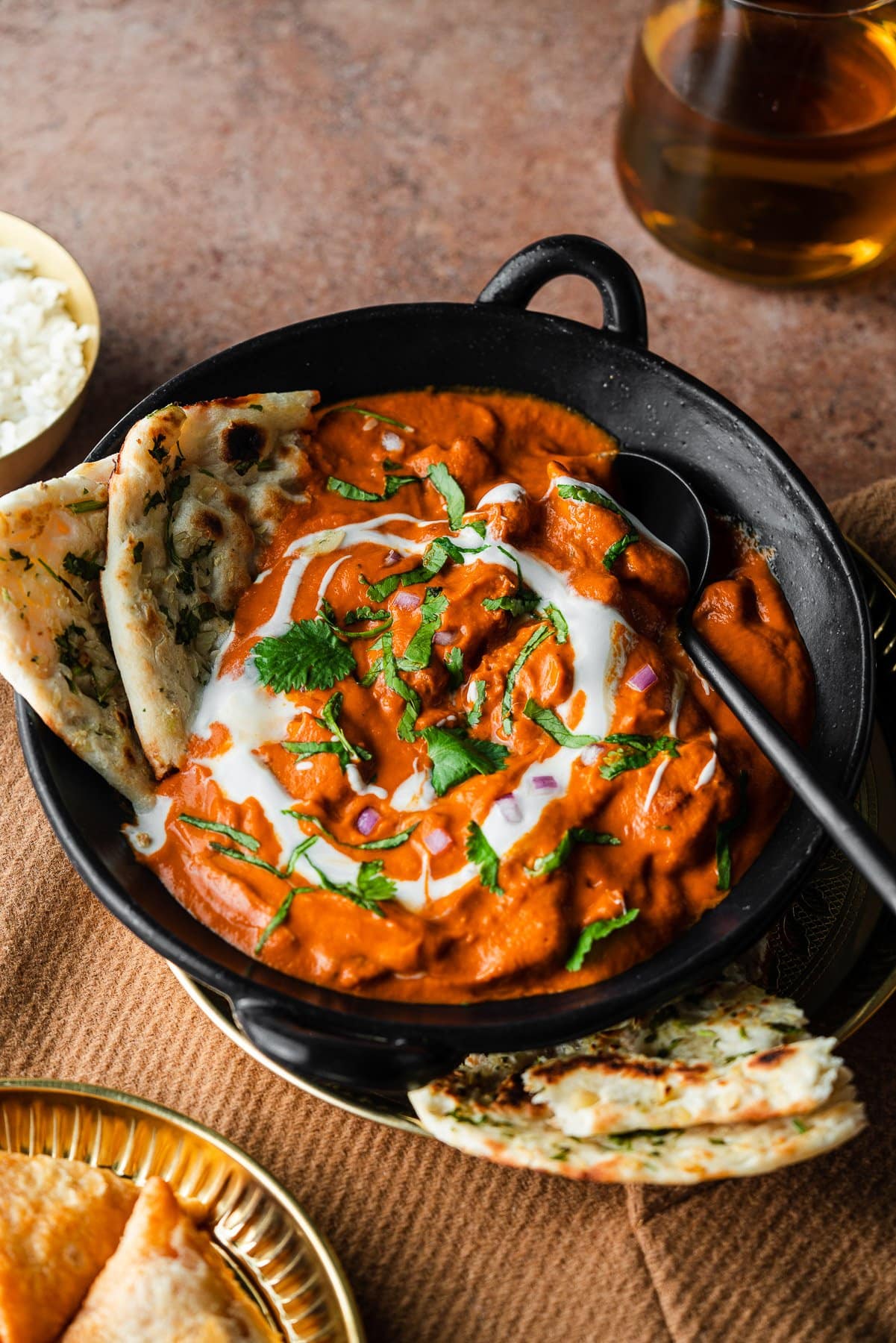

The India Gate, originally called All India War Memorial, is a majestic archway standing at the heart of New Delhi. Built in 1931, it was designed by Sir Edwin Lutyens and commemorates the 84,000 Indian soldiers who died fighting for the British Army during World War I.

The 42-meter high structure is made of yellow and red sandstone and granite. The architecture is often compared to the Arc de Triomphe in Paris. The names of the fallen soldiers are inscribed on the walls, and beneath the arch burns the Amar Jawan Jyoti (Flame of the Immortal Soldier), added in 1971 to honor Indian soldiers who died in the Indo-Pakistan War of 1971.
The surrounding lawns and gardens have become a popular recreational spot for Delhiites and tourists alike. The area comes alive in the evenings with families, street vendors, and children enjoying the open space. The annual Republic Day parade passes through India Gate, making it a focal point of national celebrations.
What makes India Gate unique is its dual role as both a war memorial and a public space that brings together people from all walks of life. It represents both colonial history and independent India's identity.
In conclusion, India Gate is much more than a memorial—it is a living symbol of India's military sacrifice and national pride. It stands as a testament to the country's complex history and continues to be an integral part of Delhi's identity and public life.
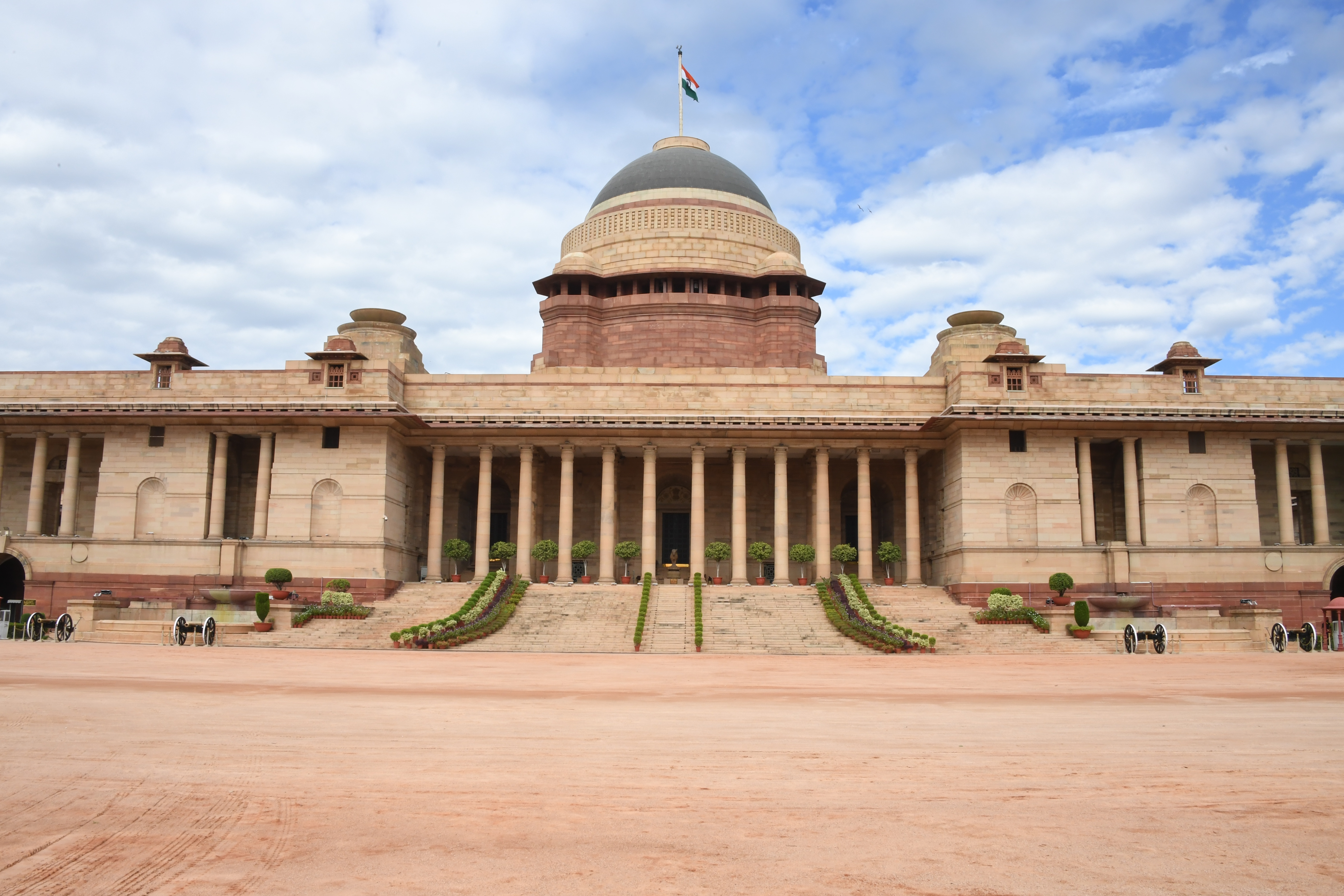
Rashtrapati Bhavan, meaning "President's House," is the official residence of the President of India. Located at the western end of Rajpath in New Delhi, it is one of the largest presidential residences in the world, covering an area of 200,000 square feet.
The building was designed by British architect Edwin Lutyens and completed in 1929 as the Viceroy's House during British rule. It features a unique blend of Western and Indian architectural styles, with 340 rooms, Mughal gardens, and a staff of 750 people. The main building has four floors and the famous Durbar Hall where official ceremonies are held.
The Mughal Gardens, spread over 15 acres, are particularly famous for their variety of flowers, fountains, and water channels. These gardens are open to the public during February and March each year, attracting thousands of visitors. The changing of the guard ceremony is another popular attraction.
Rashtrapati Bhavan represents the continuity of Indian democracy and constitutional governance. It has witnessed the transition from British rule to independent India and continues to be the center of the country's political life.
In conclusion, Rashtrapati Bhavan is much more than a presidential residence—it is an architectural masterpiece that symbolizes India's democratic traditions and political heritage. It stands as a reminder of the country's colonial past and its journey as the world's largest democracy.

The Parliament House of India, also known as Sansad Bhavan, is the seat of the Indian Parliament. Located in New Delhi, this circular building was designed by British architects Edwin Lutyens and Herbert Baker and inaugurated in 1927. It witnesses the functioning of the world's largest democracy.
The building has a diameter of 560 feet and covers an area of nearly six acres. Its circular design is unique among parliamentary buildings worldwide. The central hall is the heart of the building where joint sessions of Parliament are held, including the President's address to both houses.
The Parliament complex consists of three main chambers: the Lok Sabha (House of the People), the Rajya Sabha (Council of States), and the Library Hall. The building is surrounded by extensive gardens and fountains, with the iconic sandstone colonnade comprising 144 columns.
Parliament House is not just a legislative building but a symbol of Indian democracy. It has witnessed historic debates, the making of the Constitution, and crucial decisions that have shaped modern India. The new Parliament building, inaugurated in 2023, complements the old structure while accommodating contemporary needs.
In conclusion, Parliament House is more than a government building—it is the temple of Indian democracy where the will of 1.4 billion people finds expression. It stands as a testament to India's commitment to democratic values and constitutional governance.
Connaught Place, officially known as Rajiv Chowk, is one of Delhi's largest financial, commercial, and business centers. Built in 1933 as a showpiece of Lutyens' Delhi, it was named after the Duke of Connaught and features Georgian architecture in a circular layout.
The area consists of two concentric circles - the Inner Circle and the Outer Circle - divided into blocks by eight radial roads. The white-colored colonnaded buildings house offices of major companies, banks, restaurants, and shops. The central park features the famous Palika Bazaar underground market.
Connaught Place is not just a commercial hub but also a major transportation center with the Rajiv Chowk metro station, which is one of the busiest stations on the Delhi Metro network. The area comes alive in the evenings with office workers, shoppers, and tourists enjoying its numerous restaurants and cafes.
What makes Connaught Place unique is its blend of colonial architecture with contemporary commercial activity. It serves as both a historic landmark and a vibrant modern business district, attracting people from all over Delhi and beyond.
In conclusion, Connaught Place is much more than a commercial center—it is a microcosm of Delhi's evolution from a colonial capital to a modern metropolis. It continues to be the heart of Delhi's commercial life while preserving its architectural heritage.
The National Museum in New Delhi is one of the largest museums in India, housing over 200,000 works of art spanning more than 5,000 years of Indian history. Established in 1949, it serves as a repository of India's cultural heritage and artistic traditions.
The museum's collection includes prehistoric artifacts, Harappan civilization relics, Buddhist sculptures, Mughal miniatures, medieval sculptures, textiles, coins, and arms and armor. The famous Dancing Girl of Mohenjo-daro and the Buddha's relics are among its most prized possessions.
The museum building itself is an example of post-independence architecture, with galleries arranged chronologically and thematically. It offers educational programs, guided tours, and conservation facilities, making it an important center for historical research and cultural education.
Beyond its role as a museum, the institution plays a vital role in preserving India's cultural heritage and promoting art appreciation among the public. Its exhibitions attract scholars, students, and tourists from around the world.
In conclusion, the National Museum is more than just a collection of artifacts—it is a window into India's rich and diverse history. It stands as a testament to the country's artistic achievements and cultural continuity through the ages.
New Delhi is more than just a capital — it is the political and administrative heart of India. From its imperial architecture to its modern governance structures, from diplomatic enclaves to cultural institutions, New Delhi represents the perfect blend of heritage and modernity. Truly, New Delhi lives up to its name as the Imperial Capital.
Old Delhi, located in northern Delhi, is one of the most important historic areas in India and is famous for its Mughal-era architecture, bustling markets, and traditional culture. It is an area where history, commerce, and cultural traditions converge — known for its ancient monuments, vibrant bazaars, and culinary delights.
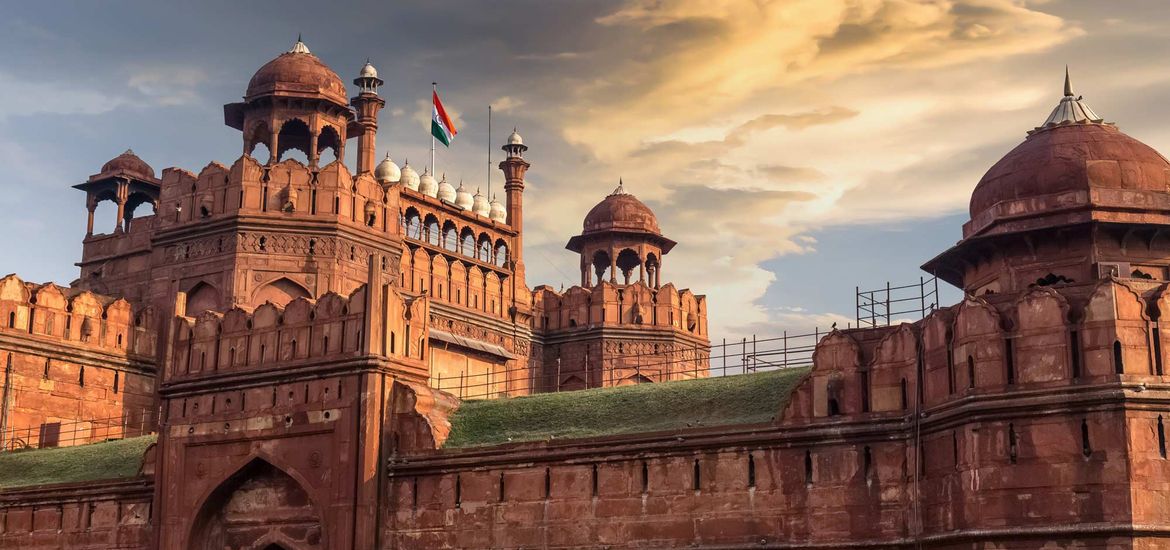
The Red Fort, also known as Lal Qila, is a historic fort that served as the main residence of the Mughal Emperors. Built by Emperor Shah Jahan in 1639 when he shifted his capital from Agra to Delhi, this magnificent structure gets its name from its massive red sandstone walls.
The fort covers an area of 254 acres and combines Persian, Timurid, and Hindu architectural styles. Key structures within the complex include the Diwan-i-Aam (Hall of Public Audience), Diwan-i-Khas (Hall of Private Audience), Rang Mahal (Palace of Colors), and the Moti Masjid (Pearl Mosque). The fort's architecture represents the zenith of Mughal creativity.
The Red Fort has immense historical significance as it witnessed the decline of the Mughal Empire, the British occupation, and finally became the site where the Prime Minister of India hoists the national flag and addresses the nation on Independence Day every August 15th.
The most important event at Red Fort is the Independence Day celebration, attended by thousands and watched by millions across the country. The fort also hosts sound and light shows that narrate its history and Delhi's story.
In conclusion, the Red Fort is much more than a historical monument—it is a symbol of India's sovereignty and rich cultural heritage. It continues to inspire national pride and attracts visitors from across the world, standing as a testament to Delhi's significance as a center of power for centuries.
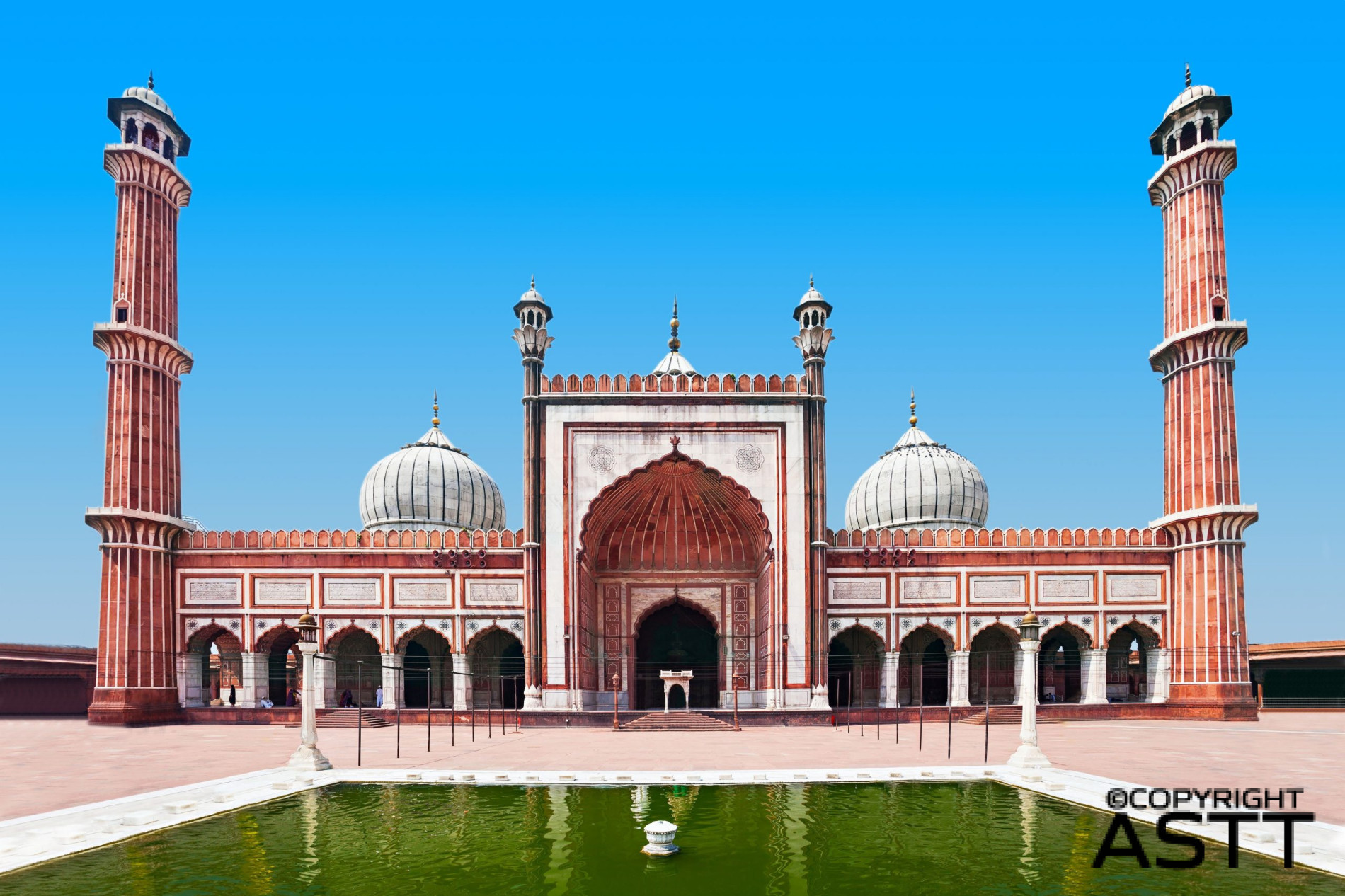
Jama Masjid, meaning "Friday Mosque," is one of the largest mosques in India and the final architectural extravagance of Mughal Emperor Shah Jahan. Completed in 1656, this magnificent mosque stands across from the Red Fort and can accommodate 25,000 worshippers in its courtyard.
The mosque is built on a raised platform and is reached by climbing 35 steps. It features three great gates, four towers, and two 40-meter-high minarets constructed of red sandstone and white marble. The courtyard measures 408 square feet, and the prayer hall is crowned by three marble domes.
Besides being a place of worship, Jama Masjid is an architectural marvel that represents the peak of Mughal architectural achievement. The mosque houses several relics of Muhammad, including a chapter of the Quran written on deer skin.
Jama Masjid is not just a religious site but a living center of Islamic culture and learning in Delhi. It welcomes visitors of all faiths (outside prayer times) and offers a panoramic view of Old Delhi from its southern minaret.
In conclusion, Jama Masjid is more than just a mosque—it is the spiritual heart of Old Delhi and a symbol of religious harmony. It continues to serve the Muslim community while attracting visitors from around the world, standing as a testament to Delhi's pluralistic heritage and Mughal architectural glory.
Chandni Chowk, meaning "Moonlight Square," is one of the oldest and busiest markets in Old Delhi. Established in the 17th century by Mughal Emperor Shah Jahan's daughter Jahanara Begum, this historic market was originally designed with a central pool that reflected moonlight.
The market is divided into several specialized sections, each dedicated to specific products: Kinari Bazaar for wedding accessories, Nai Sarak for books and stationery, Dariba Kalan for jewelry, and Khari Baoli for spices. The narrow lanes are filled with shops, food stalls, and centuries-old establishments.
Chandni Chowk is particularly famous for its street food, including parathas at Paranthe Wali Gali, jalebis at Old Famous Jalebi Wala, and kebabs at various stalls. The market also houses several historic havelis (mansions) and religious sites belonging to different communities.
The market offers a sensory overload with its vibrant colors, aromatic spices, and chaotic energy. It represents the commercial heart of Old Delhi and continues to be a major wholesale and retail market despite modern shopping malls.
In conclusion, Chandni Chowk is not just a market but an experience that captures the essence of Old Delhi. It represents the city's commercial traditions, cultural diversity, and living history, continuing to attract shoppers, food lovers, and tourists seeking authentic Delhi experiences.
Raj Ghat is a memorial dedicated to Mahatma Gandhi, the Father of the Nation. Located on the banks of the Yamuna River, it marks the spot where Gandhi was cremated following his assassination on January 30, 1948. The name "Raj Ghat" means "Royal Steps," referring to the historic ghats on the river.
The memorial consists of a simple black marble platform inscribed with Gandhi's last words "Hey Ram" (Oh God). It is surrounded by beautiful gardens and an eternal flame that burns continuously. The simplicity of the memorial reflects Gandhi's philosophy of minimalism and truth.
Raj Ghat has become a place of pilgrimage for Indians and international visitors alike. Foreign dignitaries visiting India traditionally pay their respects here. The memorial is part of a larger complex that includes museums dedicated to Gandhi's life and philosophy.
Besides being a memorial, Raj Ghat serves as a center for Gandhian studies and values. It hosts prayer meetings and events on Gandhi's birth anniversary (October 2nd) and martyrdom day (January 30th), attended by national leaders and common people.
In conclusion, Raj Ghat is much more than a memorial—it is a living symbol of Gandhi's ideals of truth, non-violence, and simplicity. It stands as a reminder of his profound impact on India's freedom struggle and continues to inspire generations with his message of peace and harmony.
The Jain Temple in Old Delhi, also known as Shri Digambar Jain Lal Mandir, is the oldest Jain temple in Delhi. Established in 1656, it is located just opposite the Red Fort and is famous for its beautiful architecture and bird hospital.
The temple is made of red sandstone and features intricate carvings typical of Jain temple architecture. The main shrine houses idols of Tirthankaras, particularly Lord Mahavira. The temple is known for its peaceful atmosphere despite being in one of Delhi's busiest areas.
The most unique feature of this temple complex is the Jain Bird Hospital, established in 1956. The hospital treats thousands of injured and sick birds every year, reflecting the Jain principle of ahimsa (non-violence) toward all living beings. Treatment is free, and birds are released after recovery.
The temple attracts both Jain devotees and tourists interested in Jain philosophy and architecture. It represents the presence of the Jain community in Delhi for centuries and their contributions to the city's cultural and commercial life.
In conclusion, the Jain Temple is more than just a religious structure—it represents Jain values of compassion, non-violence, and spiritual pursuit. It stands as a symbol of religious diversity in Old Delhi and continues to serve both the Jain community and the cause of animal welfare.
Old Delhi is not just an area of monuments but also of living cultural traditions, vibrant commerce, and historical continuity. With its Mughal heritage, commercial significance, and cultural vibrancy, Old Delhi rightfully earns the title of the "Historic Heart", making it one of the most significant cultural centers of Delhi and India.
South Delhi, located in southern part of the capital, is popularly known as the "Upscale Haven" due to its affluent neighborhoods, diplomatic areas, and premium commercial centers. Strategically located with good connectivity, it serves as a major residential, commercial, and cultural hub. Beyond its luxury appeal, South Delhi is also known for its historical sites and educational institutions.
South Delhi is much more than just the Upscale Haven — it is an area of enterprise, education, and cultural sophistication. With its strategic location, economic prosperity, and quality of life, South Delhi stands as a symbol of Delhi's urban development while maintaining its cultural roots.
West Delhi, located in western part of the capital, is famously known as the "Commercial Powerhouse" because of its thriving business districts and industrial areas. Situated with good transportation links, West Delhi beautifully blends residential comfort with commercial importance, making it one of Delhi's most dynamic areas.
West Delhi is not just a commercial area but also a symbol of Delhi's entrepreneurial spirit and business heritage. With its thriving markets, residential communities, and modern development, West Delhi truly reflects a fusion of tradition and progress. Its title as the Commercial Powerhouse highlights both its historical significance and its unique economic identity.
East Delhi, located across the Yamuna River, is popularly known as the "Cultural Melting Pot" because of its diverse population and vibrant community life. The area has grown from historic settlements to become a major residential hub and is home to important cultural and religious sites, making it one of Delhi's most diverse and dynamic areas.
East Delhi stands as a living example of India's cultural diversity and communal harmony. From the magnificent Akshardham temple to vibrant local markets, the area reflects the richness of Indian culture and the spirit of unity in diversity. Its rich cultural mix, community traditions, and residential significance make East Delhi rightfully known as the Cultural Melting Pot and one of Delhi's proudest residential centers.
The different areas of Delhi reflect the soul of the capital. While New Delhi showcases governance and diplomacy, Old Delhi treasures history, South Delhi represents upscale living, West Delhi preserves commercial enterprise, and East Delhi maintains cultural diversity. Together, these areas present a perfect balance of heritage, culture, progress, and modernity, making Delhi one of the most historically significant and dynamic capital cities in the world.
The fashion of Delhi is a vibrant reflection of its status as India's capital and a melting pot of cultures from across the country. Clothing in the city represents a fascinating synthesis of traditional Indian wear, contemporary global trends, and unique local styles. From elaborate traditional costumes worn during festivals and weddings to cutting-edge designer wear and practical urban fashion, Delhi's clothing scene offers a comprehensive glimpse into the city's identity as a fashion capital where ancient traditions and modern creativity coexist and influence each other.
Delhi's women's traditional attire showcases the city's role as a cultural crossroads where fashion traditions from across India converge and evolve. From the elaborate ensembles of wedding seasons to the elegant everyday wear of different communities, Delhi's female fashion displays incredible diversity and sophistication. These outfits are worn with pride during festivals, ceremonies, and social events, representing the city's living cultural heritage and its position as a trendsetter in Indian fashion.

Traditional women's fashion in Delhi is a magnificent display of cultural synthesis and fashion innovation. From the wedding ensembles of South Delhi to the everyday salwar kameez of university campuses, and from designer interpretations to market innovations, Delhi's female fashion continues to reflect the city's role as India's fashion capital. It represents not just clothing but a comprehensive system of cultural expression that connects women to their heritage while embracing contemporary creativity and global influences.
Delhi's men's traditional attire reflects the city's cosmopolitan character and its role as the nation's political and business capital. The clothing varies from formal traditional wear for official functions to contemporary ethnic fashion for social events. Even in this modern metropolis, traditional attire maintains its significance during festivals, weddings, and cultural events, showcasing Delhi's ability to preserve sartorial traditions while adapting to urban contexts.

Traditional men's fashion in Delhi is a vibrant expression of the city's cosmopolitan character and fashion leadership. From the formal sherwanis of wedding seasons to the elegant kurtas of diplomatic receptions, and from traditional festival wear to contemporary ethnic fashion, each element tells the story of Delhi's evolution as a fashion capital. It demonstrates how traditional clothing has been reinvented to meet the demands of urban life while preserving its cultural essence and aesthetic appeal.
Delhi is home to numerous fashion districts and markets that represent different aspects of the city's sartorial culture. From luxury designer boutiques to bustling traditional markets, these fashion spaces showcase Delhi's incredible diversity as a shopping destination and fashion hub. Each district has its unique character and offerings, representing the different facets of Delhi's fashion landscape from high-end luxury to affordable style.
Delhi's fashion landscape is a living representation of the city's economic vitality, cultural richness, and creative energy. From the luxury boutiques of South Delhi to the traditional markets of Old Delhi, and from fashion education to craft preservation, the city's fashion ecosystem tells the story of Delhi's evolution as India's fashion capital. It represents the city's ability to honor traditional crafts while embracing contemporary design, creating a vibrant fashion scene that influences national trends and represents Indian fashion on the global stage.
As India's capital and a global city, Delhi's fashion scene is significantly influenced by contemporary trends and international styles. The city's designers, retailers, and consumers actively engage with global fashion while maintaining a distinct Indian identity. Delhi's contemporary fashion represents the city's cosmopolitan character and its role as a bridge between Indian traditions and global trends.
Contemporary fashion in Delhi represents the city's dynamic engagement with global trends while maintaining its distinctive character. From luxury shopping destinations to college campuses, and from professional settings to social events, Delhi's fashion scene showcases the city's ability to absorb international influences while creating styles that are uniquely its own. This creative synthesis makes Delhi's fashion landscape exciting and evolving, where clothing becomes a medium of self-expression, cultural identity, and global connectivity, reflecting the city's journey from historic capital to modern global metropolis.
Delhi's fashion is a comprehensive reflection of the city's multiple identities as India's capital, a historical city, a cultural melting pot, and a global metropolis. From the traditional ensembles of Old Delhi to the designer creations of South Delhi, and from market innovations to luxury fashion, the city's sartorial landscape continues to evolve while maintaining its connection to India's rich textile heritage. It not only represents the creative energy of Delhi's diverse communities but also demonstrates the city's leadership in shaping Indian fashion trends. Much like Delhi itself, its fashion scene honors the past while enthusiastically embracing the future, creating a vibrant tapestry that represents both Indian tradition and contemporary global style.